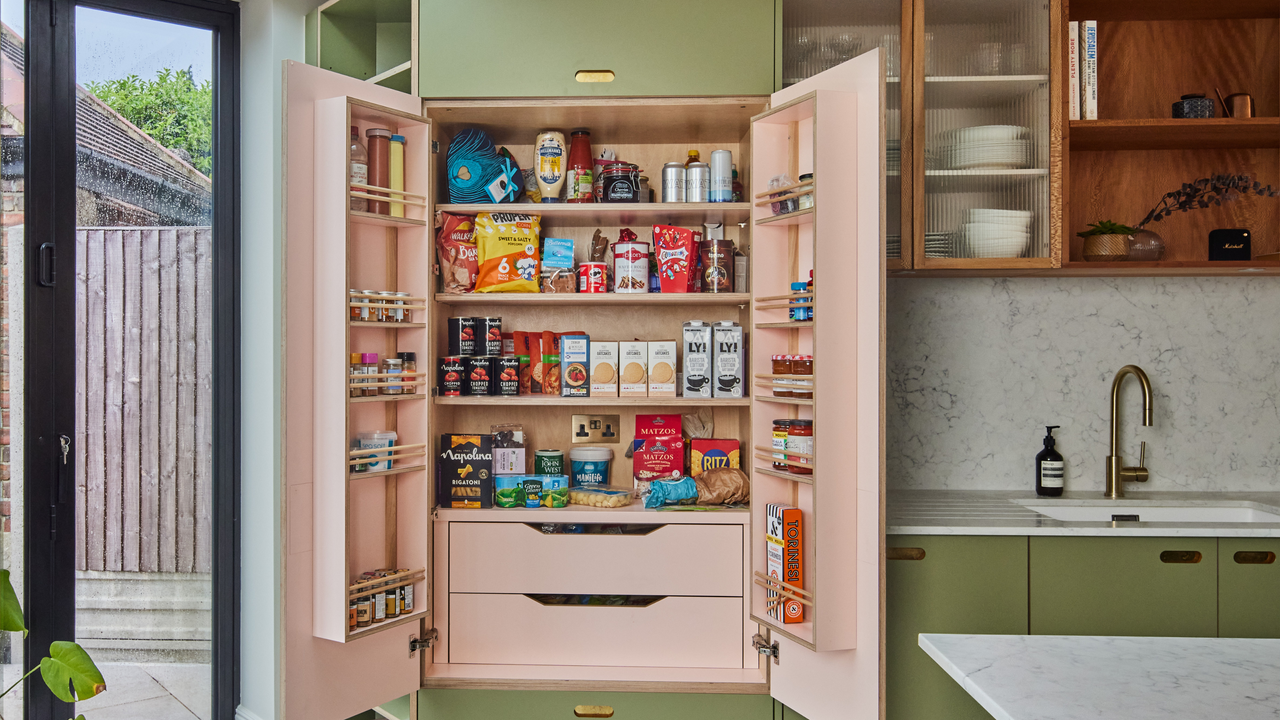
While the sunny season may be lovely to enjoy from the comfort of your garden, inside your kitchen — specifically the pantry — is a different story. And that's where learning about how to keep it nice and cool comes into play.
The summer heat is not so kind to our kitchen pantry sometimes, and the hot, humid days can have disastrous effects on the quality of our food and snacks. While the fresh produce within the confines of our fridge is protected from the outside conditions, our dried goods are not so lucky.
As Allison Lynch, a senior design consultant at Roundhouse, explains, "A pantry is a dry food storage cupboard and most foods kept out of the fridge have a longer shelf life, but this can be compromised if in extreme heat and can therefore spoil, reducing the time it lasts before changing the taste. Chocolates can melt, spices can become moist and stick together, and can accelerate bacteria if temperatures are above recommended food safety guidelines."
So, unless you're happy throwing out moldy food every other week, it's in your best interest to figure out how to keep the temperatures down in your pantry; and these are the expert's top tips on doing just that.
1. Think About Your Pantry Placement
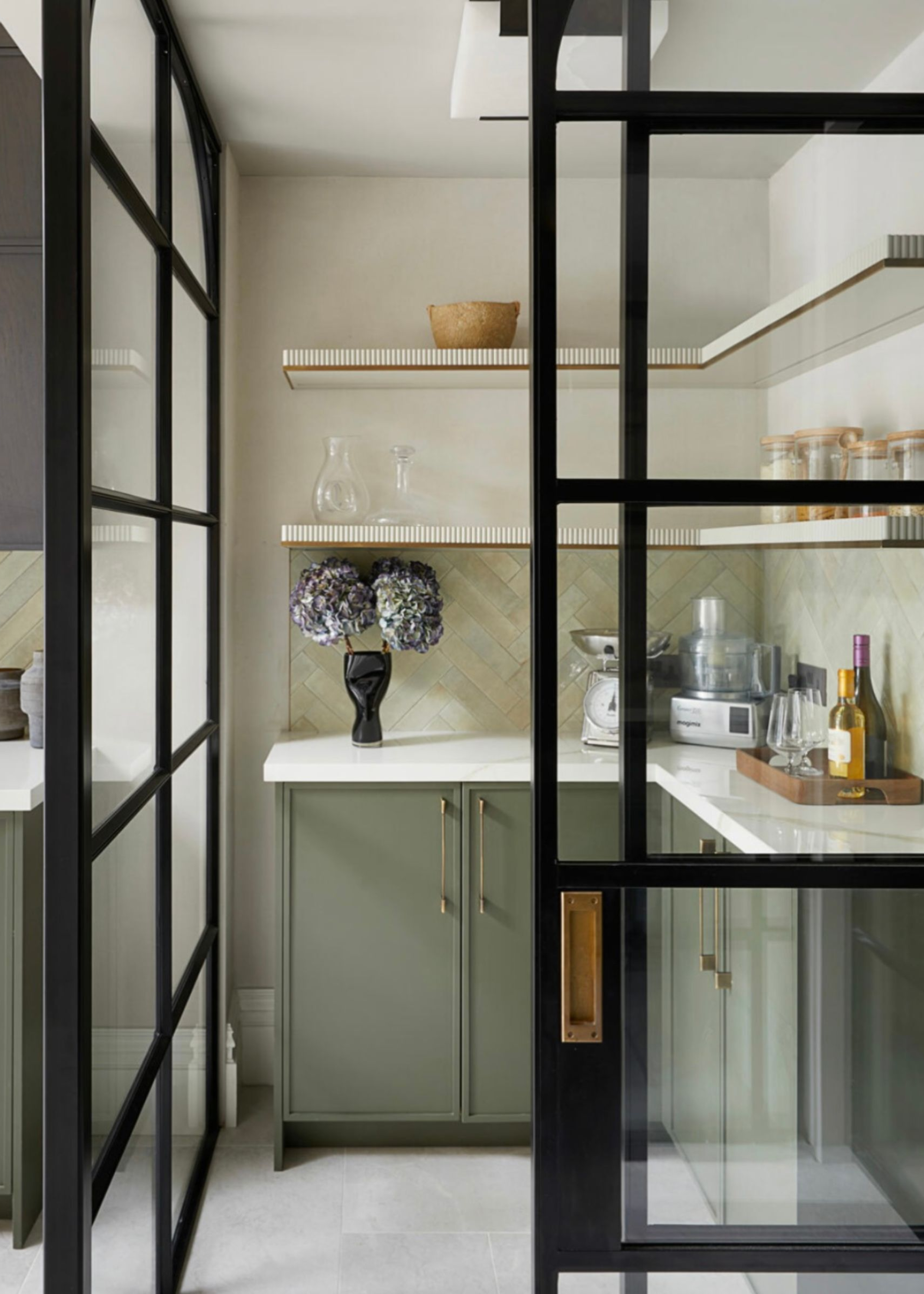
The first step to ensuring a pleasantly cool pantry requires some foresight, as this one comes at the very beginning.
"We always advise clients to think carefully about pantry placement if they want to keep ingredients at their best," comments kitchen expert Richard Davonport, from Davonport.
Knowing the best spot to place your pantry will set you up for success and help reduce humidity in a kitchen as well as moisture in this area. It's always recommended to try to scope out the coolest, shadiest spot in the room, and prioritize that positioning for your pantry.
But it's not just about where you place it; you also must consider the general layout of your kitchen, and how this will affect your pantry. As Richard explains, "A pantry cabinet should sit away from heat sources such as ovens, hobs, or dishwashers, as these create hotspots that can quickly raise internal temperatures."
For the easiest setup, Richard suggests, "Choosing an internal wall or a shaded corner of the kitchen is ideal."
2. Choose Stone as the Main Material
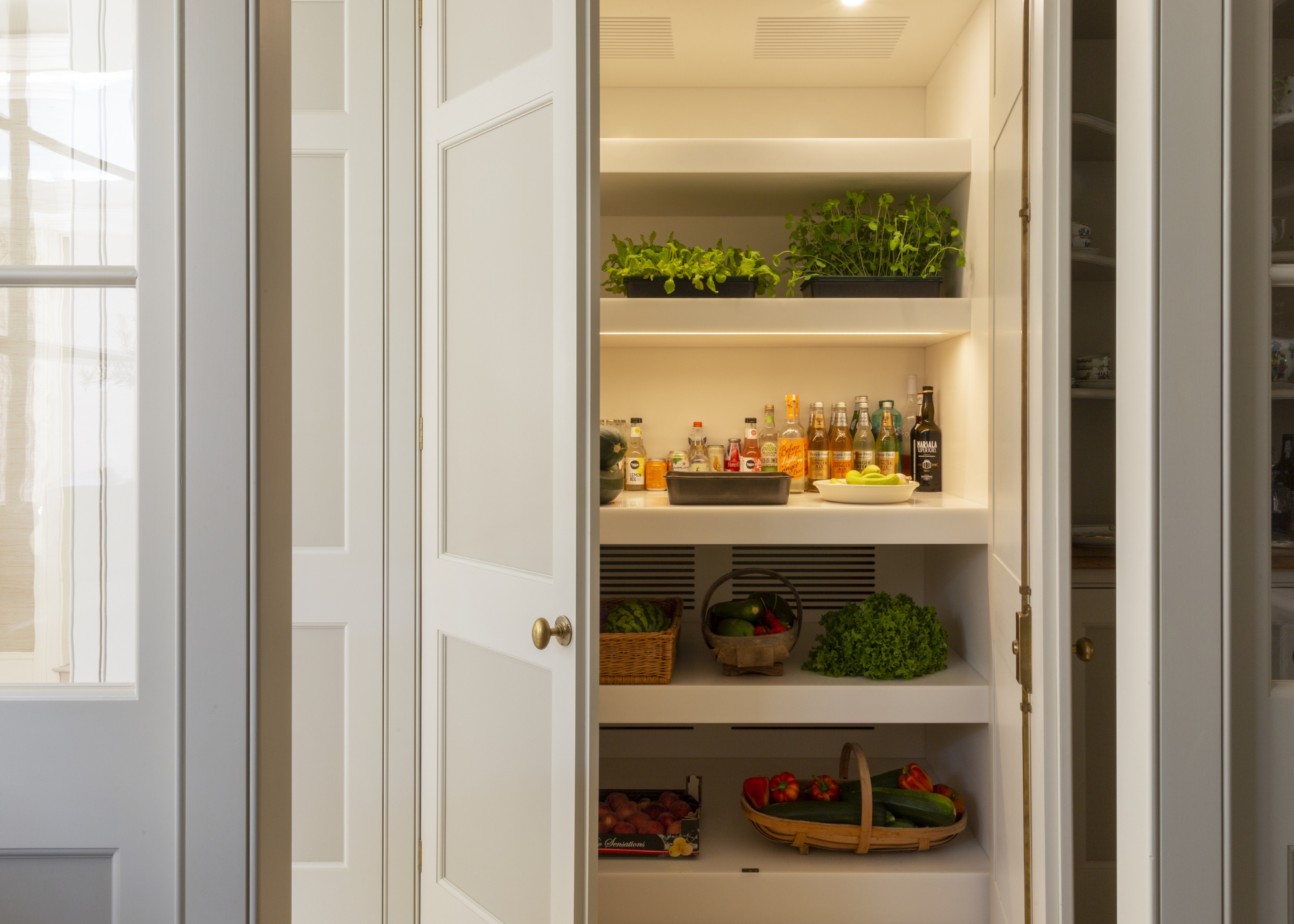
As well as positioning, the materials you choose to use within your pantry can also have an impact on the temperature conditions of the space.
“Stone is an ideal material for creating a cooling shelf, such as marble or slate, as it’s cold to the touch and will keep food fresher for longer," comments Lizzie Spinks, from Makers Furniture.
Ideally, you want to look out for materials that have both good thermal conductivity, meaning heat flows through them easily, as well as good thermal inertia, which means they are resistant to changes in temperature. Most natural stones are a great example of this.
"Stone is always a winner for keeping your pantry cool — natural marble or granite, and slate keeps pantry storage cool and great for pastry rolling if you are a baker," says Allison from Roundhouse.
As Allison explains, "Stone holds onto its naturally low thermal conductivity and is able to store the cool temperature for long periods and quickly transfer heat off it."
3. Ensure You Integrate Air Vents
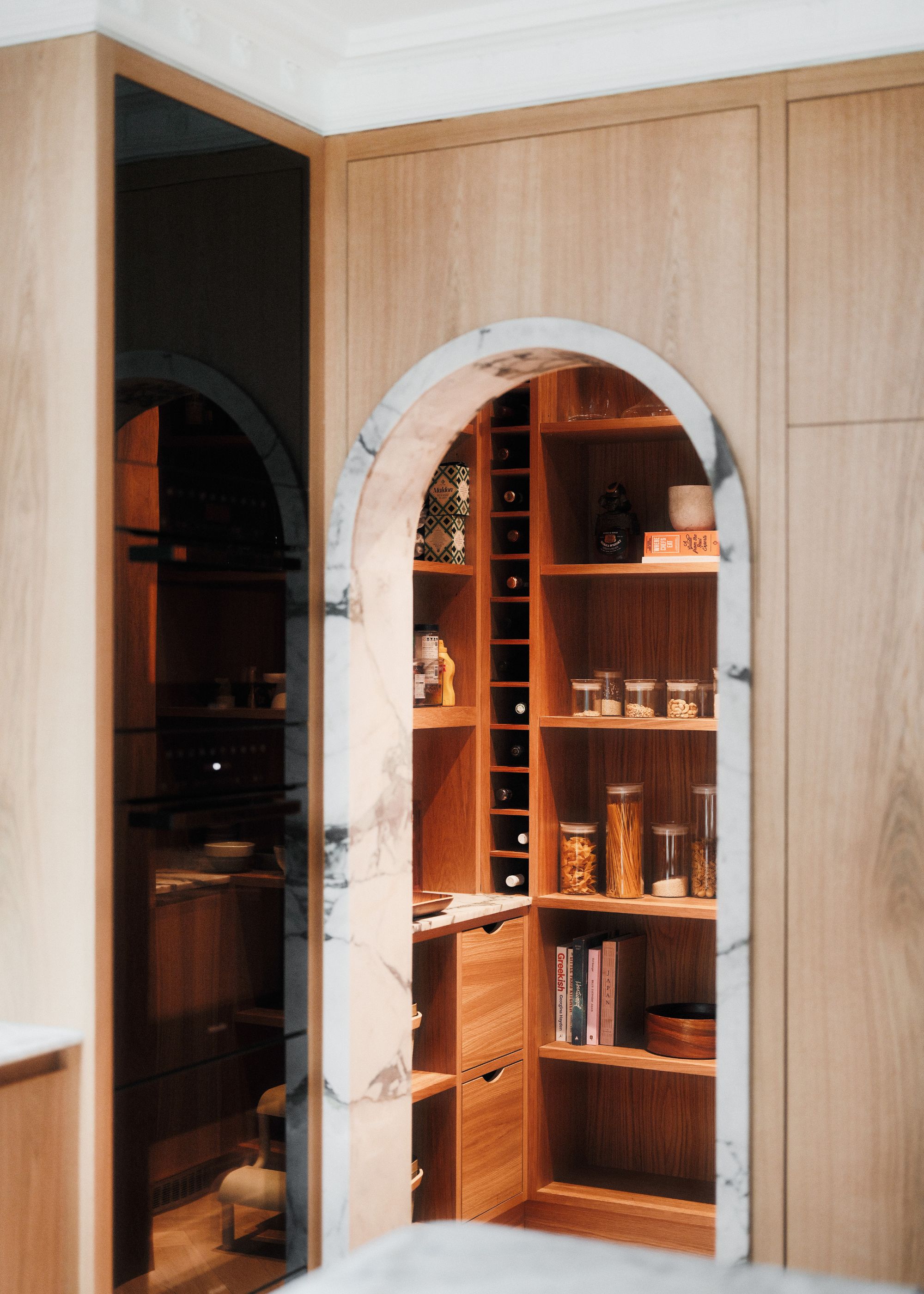
Perhaps the most crucial thing to consider when designing your pantry is the importance of kitchen ventilation.
This doesn't have to be dramatic, and as Richard says, "Even a discreet vent or a small gap at the top and bottom of a cabinet can help air circulate and prevent heat from building up in tall larders or closed pantry units."
The main goal is to ensure there is space for air to flow in and out, providing a healthy flow of air and preventing the buildup of moisture, which can eventually lead to mold.
As Thomas Borcherding, a kitchen designer from Homestar Remodel, says, "To keep a pantry cool during hot summer months, the key is limiting heat gain and encouraging air circulation."
He continues, "If the home's air temperature is cooler than the air found in the pantry, it's best to leave the door open. You may wish to run a fan inside the pantry, pointing outwards to encourage air circulation."
4. Incorporate Some Insulation
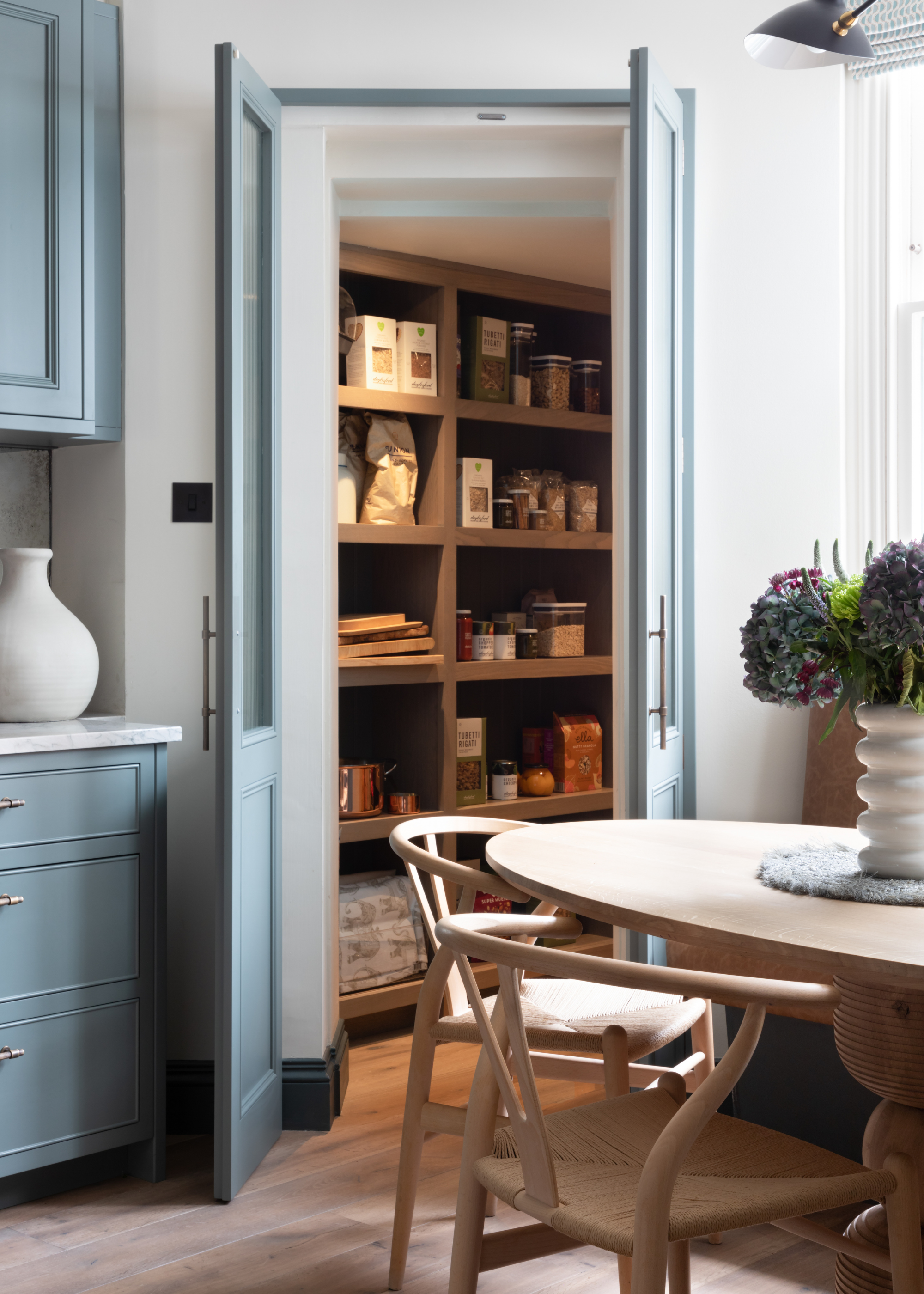
But it's not just ventilation that makes the difference, as Richard explains, "We also consider insulation."
He adds, "On projects where space is tight or walls are exposed to direct sunlight, we’ve used reflective backing boards or heat-resistant materials behind the cabinetry to reduce thermal transfer. These additions are hidden but make a big impact on performance."
These small fixes that Richard mentions can end up having major effects on the overall feel of your pantry, allowing you to create a much cooler, airier atmosphere. These same ideas can also help you to keep a kitchen cool, as well.
Allison also adds, "If using underfloor heating in your kitchen, make sure you don’t have it within a walk-in pantry, and if windows are in the room, keep the sunlight out with blinds."
5. Look for Different Door Types
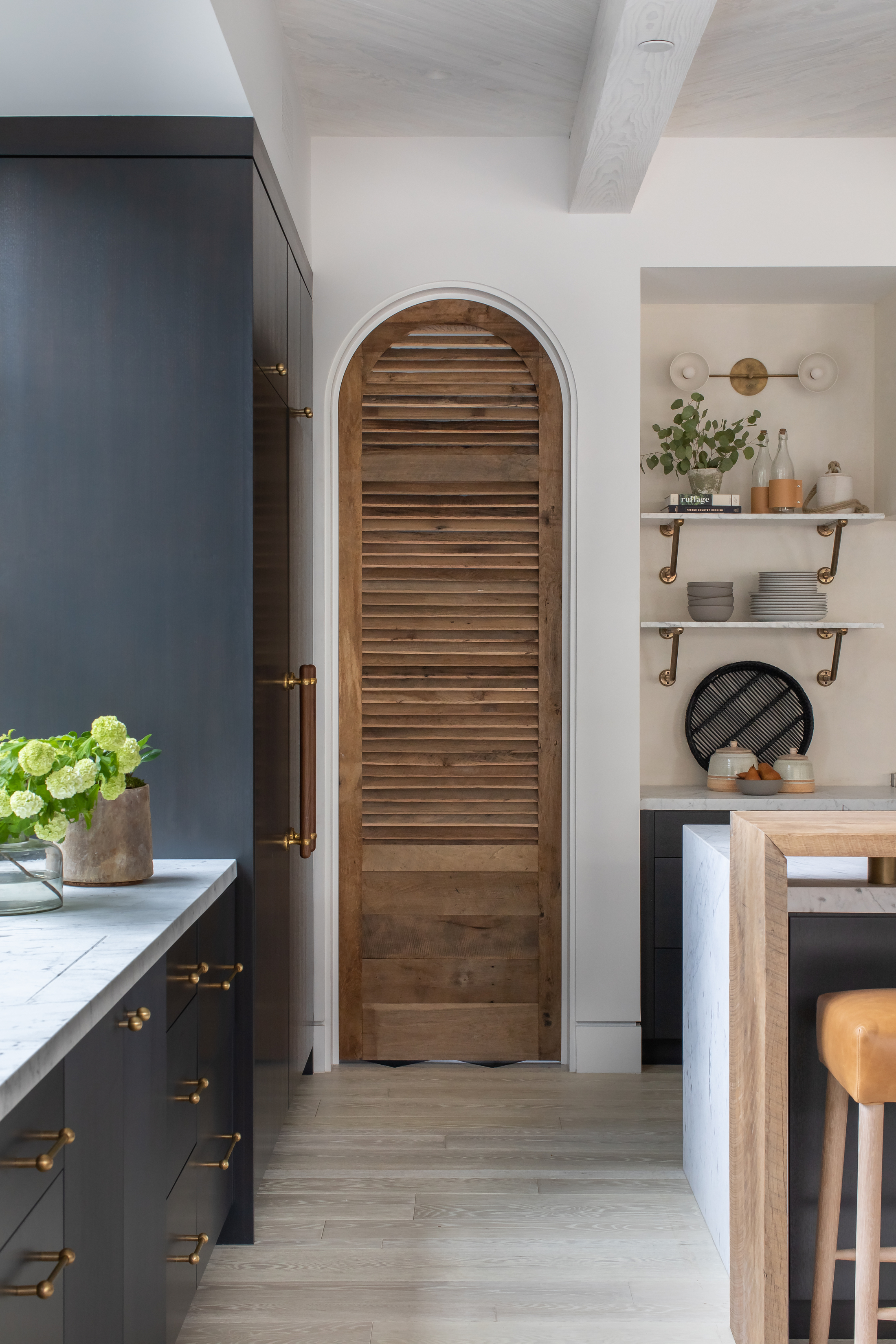
"And finally, the doors themselves matter," comments Richard.
It's easy to overlook the impact that the right door can have on your pantry, and simply opt for the same interior doors used throughout your home for the sake of consistency. But this is not just a stylistic choice, as Richard explains,
"Louvered doors or bi-fold options can improve airflow without compromising the look," he says.
Ultimately, Richard says, "It’s all about balancing form and function so your pantry works hard behind the scenes while enhancing the overall design of your kitchen."
Who said storage ideas have to be boring? This playful design from Alessi shows that you can have practicality and style all in one place. Stock up on a few different colorways and use them to store all your essentials.
These colorful crates from Hay have quickly become an icon in the world of stylish storage. We love the way they look stacked up in a rainbow of different colors, and they make the perfect storage space for all your dried goods.
Or, if you're into a more rustic look, there is something very charming about using straw storage baskets as your pantry storage. This version from H&M comes in a variety of sizes, so you can mix and match them.
Some houses simply aren't built to handle the heat, a fact I'm forced to remember every time London decides to reach tropical temperatures, so learning how to cool down your rooms can be a lifesaver. This year, I invested in a few gadgets for a heatwave, and I have not lived to regret it.







